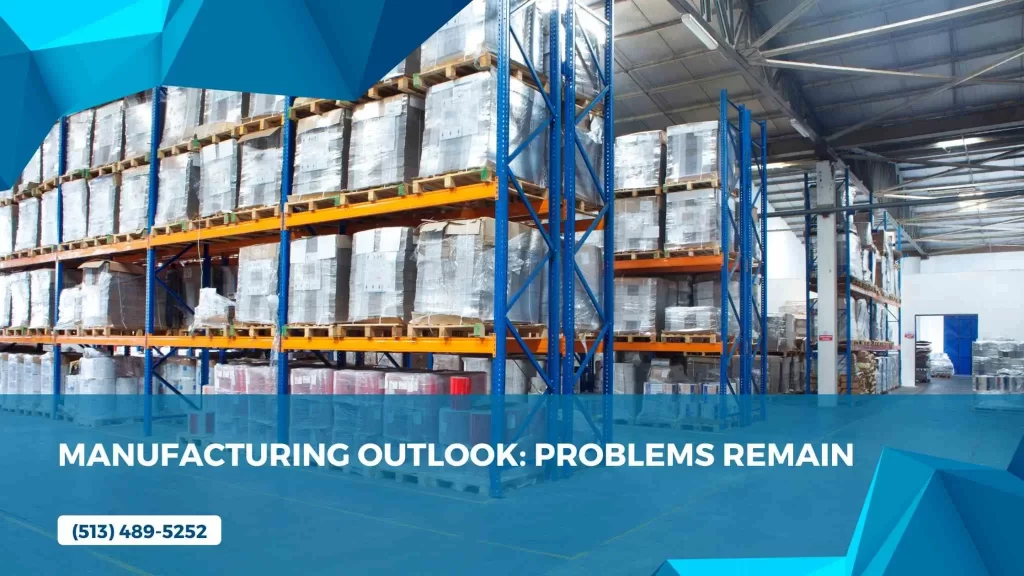What is the near term outlook for US manufacturing? Not particularly encouraging.
There are nearly an infinite number of internet answers to this, and we found 2 good ones at the National Association of Manufacturers 4Q 22 survey and Deloitte’s 2023 Manufacturing Industry Outlook.
Here’s a segment of NAM’s Summary of Findings:
“While manufacturing proved to be quite resilient through the challenges of the past few years, the sector ended 2022 with weaker conditions, both in the U.S. and globally. Manufacturers continue to report concerns with workforce shortages, inflationary pressures, and lingering supply chain bottlenecks, even with the latter showing signs of improvement. This is on top of other economic and geopolitical uncertainties. Nearly all the sentiment surveys show activity at post-pandemic lows. Manufacturing production declined 0.6% in November, with just 1.2% growth over the past 12 months. Yet, despite such softness, the labor market has remained solid, with manufacturers adding more workers in 2022 than in any year since 1994 and with job openings still at highly elevated levels.”
Workforce shortages are frequently listed as success limitations. One contributor is the decline of non-4-year college technical training over the past several decades. Is there shop offered in high schools anymore, as just one example? Deloitte’s Outlook notes increased investment in digital technologies such as AI, robotics, automation, and additive manufacturing, just to name a few. Is there any widely available training for such things available for an interested high school grad?
The NAM survey notes this:
“…attracting and retaining a quality workforce returned to being the number-one primary business challenge in the fourth quarter, cited by 75.7% of respondents. This was followed by supply chain challenges (65.7%), increased raw material costs (60.7%), transportation and logistics costs (50.0%), rising health care and insurance costs (47.9%) and a weaker domestic economy (47.6%), among other challenges.”
Not only is labor hard to find, but it’s also difficult to retain. Businesses are expending considerable effort to provide incentives for workers to remain with increased benefits, bonuses and rising wages. Naturally, this leads to inflationary pressures, which are another issue cited as a manufacturing problem.
It would seem to us that some thoughtful immigration legislation could lessen the labor shortage problem but it seems neither political party has recognized managing immigration would be a useful endeavor.
Not only that, but according to the NAM survey consider these:
“Regarding labor issues, 65.7% of respondents would be less likely to utilize federal incentives to increase domestic manufacturing investment if they included conditions such as a requirement to stay neutral in union-organizing efforts, limitations on executive compensation or prohibitions on specific uses of company funds (e.g., stock buybacks), with one-quarter of those completing the survey uncertain. Likewise, no respondent said that the Protecting the Right to Organize (PRO) Act would have a positive impact on their business operations or with their existing relationships with employees, with 55.9% saying it would have a negative impact and 44.1% uncertain.
“Congress and the administration are considering imposing new “Right to Repair” restrictions, which would require manufacturers to give customers access to trade secrets and embedded software in their products. These restrictions could affect a wide range of industries, including industrial machinery, automotives, technology, medical devices and more. Among those companies that said they would be impacted by federal “Right to Repair” restrictions, 83.6% were concerned about intellectual property 4 protections. Other concerns or impacts included product safety risks (54.3%), the ability to provide parts due to supply chain issues (50.9%), reputational damage (50.0%), consumer privacy and cybersecurity worries (47.4%) and environmental regulatory compliance (38.8%) challenges.”
We are pleased to note these NAM comments suggest wariness about federal government “help”.
Supply chain bottlenecks continue as another major issue. From the Deloitte summary:
“…80% of surveyed manufacturing executives have experienced a “heavy” to “very heavy” impact of disruption on their supply chains over the past 12 to 18 months (figure 3). According to the Deloitte outlook survey, 72% of surveyed executives believe the persistent shortage of critical materials and the ongoing supply chain disruptions present the biggest uncertainty for the industry in the coming year. Manufacturers are mitigating these risks not only with increased utilization of digital technology but also with time-tested approaches.”
One of these approaches is “boosting local capacity”. “In response to the current disruption, many global OEMs have committed to opening new production facilities in US locations, boosting local production capacity for parts and materials.”
We hope this is positive news for smaller domestic manufacturers. If you are one of the organizations seeking local capacity for your parts and assemblies, be aware Proficient Sourcing has a network of outstanding domestic companies that can address most manufacturing requirements. Give us a call if this is you! 513-489-5252 gives you immediate action!


